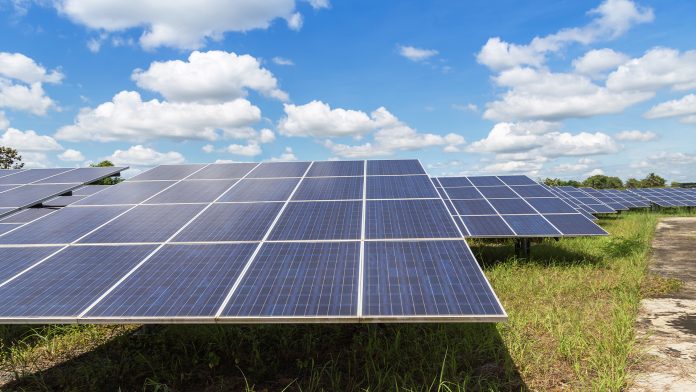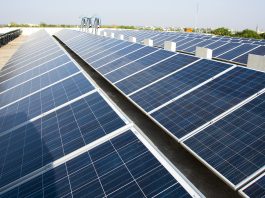Researchers have developed a gentle method that allows for the eco-friendly recycling of solar cells.
The new solar cell recycling method, shown in new research from Chalmers University of Technology, paves the way for precious metals to be efficiently recovered from thin-film solar cells. The method is more environmentally friendlier than prior methods of recycling and will result in more flexible and highly efficient solar cells.
The work, ‘Valuable metal recycling from thin film CIGS solar cells by leaching under mild conditions,’ is published in the journal Solar Energy Materials and Solar Cells.
Types of solar cells
There are currently two mainstream types of solar cells, silicon-based solar cells which account for 90% of the market, and thin-film solar cells. Thin-film solar cells use three main sub-technologies, one of which is known as CIGS (Copper, Indium, Gallium, Selenide) and consists of a layer of different metals, including indium and silver.
Thin-film solar cells are the most effective of today’s commercially available technologies, and can be made bendable and adaptable which means that they can be used in many different areas.
The importance of recycling solar cells
Although thin-film solar cells are more effective, demand for indium and silver is high, and increased production is accompanied by a growing amount of production waste. This waste contains a mixture of valuable metals and hazardous substances.
Therefore, recycling solar cells is of the utmost importance so that attractive metals can be separated and reused in new products.
“It is crucial to remove any contamination and recycle, so that the material becomes as clean as possible again. Until now, high heat and a large amount of chemicals have been used to succeed, which is an expensive process that is also not environmentally friendly,” said Ioanna Teknetzi, PhD student at the Department of Chemistry and Chemical Engineering, who together with Burcak Ebin and Stellan Holgersson published the new study.
The research shows that an eco-friendly recycling process can have the same outcome
“We took into account both purity and environmentally friendly recycling conditions and studied how to separate the metals in the thin-film solar cells in acidic solutions through a much ‘kinder’ method of using leaching. We also have to use chemicals, but nowhere near as much as with previous leaching methods. To check the purity of the recovered indium and silver, we also measured the concentrations of possible impurities and saw that optimisation can reduce these”, said Teknetzi.
The new solar cell recycling method showed that it is possible to recover 100% of the silver and 85% of the indium. The process takes place at room temperature without adding heat.
“It takes one day, which is slightly longer than traditional methods, but with our method, it becomes more cost-effective and better for the environment. Our hopes are that our research can be used as a reference to optimise the recycling process and pave the way for using the method on a larger scale in the future”, said Ebin.
The method for recycling solar cells
- First, the film from the solar cell is analysed with respect to chemical composition, particle size and thickness, and material. The solar cell is positioned in a container with an acid solution at the required temperature. The team then used agitation to facilitate dissolution of metals in the acid solution.
- By analysing samples taken at specific times during the leaching process, leaching effectiveness and chemical reactions were assessed. The different metals are leached at different times. Therefore, the process can be stopped before all the metals begin to dissolve, which in turn contributes to achieving higher purity.
- When the leaching is complete, the metals are in the solution in the form of ions. These can be easily purified to be reused in the manufacture of new solar cells.









